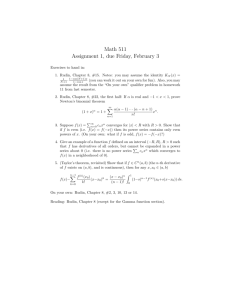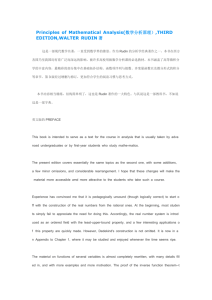PROBLEM SET 4 FOR 18.102, ‘SPRING’ 2015 Problem 4.1
advertisement
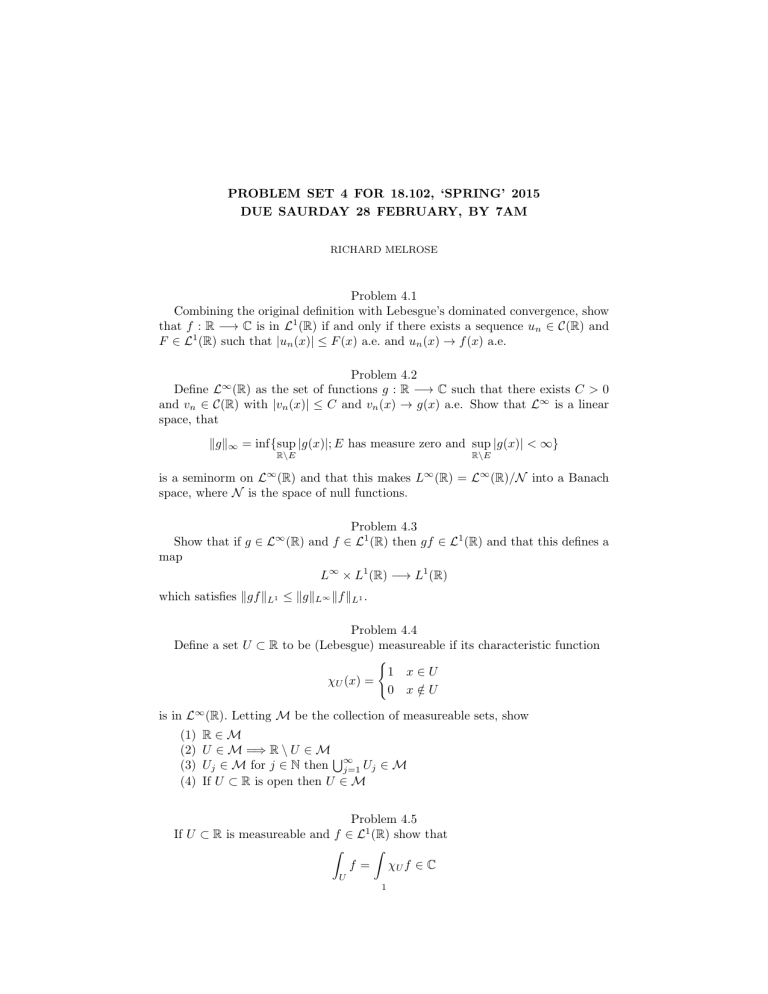
PROBLEM SET 4 FOR 18.102, ‘SPRING’ 2015
DUE SAURDAY 28 FEBRUARY, BY 7AM
RICHARD MELROSE
Problem 4.1
Combining the original definition with Lebesgue’s dominated convergence, show
that f : R −→ C is in L1 (R) if and only if there exists a sequence un ∈ C(R) and
F ∈ L1 (R) such that |un (x)| ≤ F (x) a.e. and un (x) → f (x) a.e.
Problem 4.2
Define L∞ (R) as the set of functions g : R −→ C such that there exists C > 0
and vn ∈ C(R) with |vn (x)| ≤ C and vn (x) → g(x) a.e. Show that L∞ is a linear
space, that
kgk∞ = inf{sup |g(x)|; E has measure zero and sup |g(x)| < ∞}
R\E
R\E
is a seminorm on L∞ (R) and that this makes L∞ (R) = L∞ (R)/N into a Banach
space, where N is the space of null functions.
Problem 4.3
Show that if g ∈ L∞ (R) and f ∈ L1 (R) then gf ∈ L1 (R) and that this defines a
map
L∞ × L1 (R) −→ L1 (R)
which satisfies kgf kL1 ≤ kgkL∞ kf kL1 .
Problem 4.4
Define a set U ⊂ R to be (Lebesgue) measureable if its characteristic function
(
1 x∈U
χU (x) =
0 x∈
/U
is in L∞ (R). Letting M be the collection of measureable sets, show
(1)
(2)
(3)
(4)
R∈M
U ∈ M =⇒ R \ U ∈ M S
∞
Uj ∈ M for j ∈ N then j=1 Uj ∈ M
If U ⊂ R is open then U ∈ M
Problem 4.5
If U ⊂ R is measureable and f ∈ L1 (R) show that
Z
Z
f = χU f ∈ C
U
1
2
RICHARD MELROSE
is well-defined. Prove that if f ∈ L1 (R) then
(R
f
(0,x)
R
If (x) =
− (0,−x) f
x≥0
x<0
is a bounded continuous function on R.
Problem 4.6 – Extra
Recall (from Rudin’s book for instance) that if F : [a, b] −→ [A, B] is an increasing continuously differentiable map, in the strong sense that F 0 (x) > 0, between
finite intervals then for any continuous function f : [A, B] −→ C, (Rudin shows it
for Riemann integrable functions)
Z B
Z b
(1)
f (y)dy =
f (F (x))F 0 (x)dx.
A
a
Prove the correspondng identity for every f ∈ L1 ((A, B)), which in particular
requires the right side to make sense.
Problem 4.7 – Extra
Show that if f ∈ L1 (R) and If in Problem 4.5 vanishes identically then f ∈ N .
Department of Mathematics, Massachusetts Institute of Technology
E-mail address: rbm@math.mit.edu
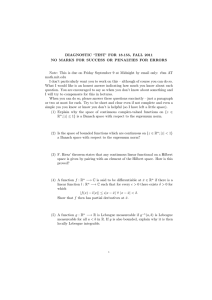
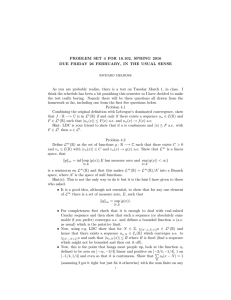
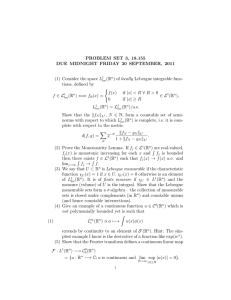

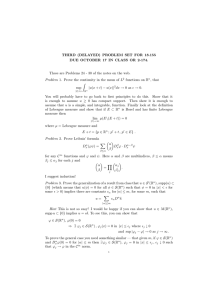
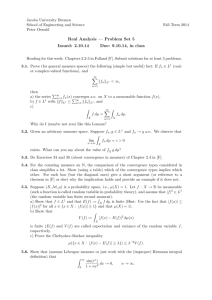

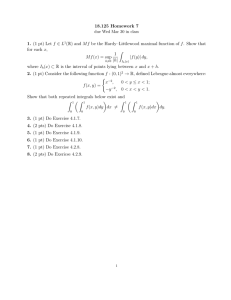

![18.125 Homework 10 : [0, 1] → [0, 1]](http://s2.studylib.net/store/data/010491524_1-2ff13645829ce7088147b1ea2705ee77-300x300.png)
